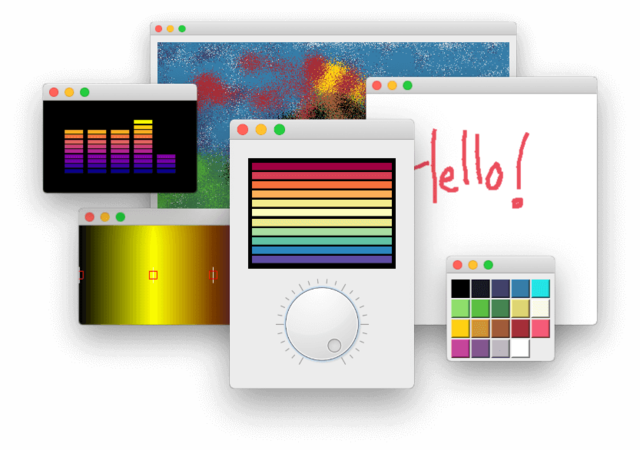[align=center]
The Model View Architecture With Pyside6: Data Driven Uis
Published 6/2025
Created by Daniel Gakwaya
MP4 | Video: h264, 1280x720 | Audio: AAC, 44.1 KHz, 2 Ch
Level: Intermediate | Genre: eLearning | Language: English | Duration: 38 Lectures ( 12h 20m ) | Size: 6.72 GB[/center]
Build advanced UIs in Qt using Pyside6 with clean architecture, reusable components, and real data models.
What you'll learn
Build and connect Qt's built-in models to views like QListView, QTableView, and QTreeView for dynamic, data-driven UIs.
Create custom models using QAbstractItemModel to support editing, dynamic rows, and custom roles in list, table, and tree formats.
Design custom delegates and editors for rich user interaction, including painting, editing, and a reusable star rating widget.
Build a complete Expense Tracker app with SQLite, applying models, views, delegates, and drag-and-drop in a real-world project.
Design and build desktop apps like inventory systems, project trackers, and media libraries that are fast, scalable, and user-friendly.
Architect clean, maintainable Qt applications by separating data, logic, and presentation using the Model/View approach.
Create responsive UIs that can handle complex data structures-without resorting to spaghetti code or manual widget management.
Gain the confidence to take on real-world client projects or jobs that require advanced Qt and Pyside6 UI development skills.
Requirements
Basic knowledge of Python (variables, functions, classes, pointers)
Basic experience with Qt Widgets and Pyside6 (layouts, signals & slots, basic UI setup)
Basic computer familiarity (Installing software, etc)
I'll teach you the rest!
Description
Build desktop apps like inventory systems, media libraries, project trackers, and finance tools-powered by Qt and and Python through PySide6. This course gives you the hands-on skills to master Qt's powerful Model/View architecture so you can design UIs that are fast, scalable, and built to last.We start with the basics-Qt's convenience widgets like QListWidget, QTableWidget, and QTreeWidget-to build a solid foundation. From there, we dive into essential built-in models:QFileSystemModel for navigating and interacting with the file systemQStringListModel for simple lists of dynamic dataQSortFilterProxyModel to sort and filter data without changing the underlying modelYou'll then go deeper into custom model development using QAbstractItemModel:Read-only models for displaying external or static dataEditable models with support for user interactionModels that support adding/removing rows and custom data rolesTable models that mirror real-world tabular structuresTree models to manage hierarchical data like org charts or file explorersTo enhance interactivity and UX, you'll build custom delegates and editors:Custom painting and editing using delegatesA reusable star rating widget and editorYou'll also implement drag-and-drop:Between standard widgetsAt the item level within viewsIn fully custom modelsFinally, you'll apply all your knowledge in a real-world course project: building an Expense Tracker UI backed by SQLite.By the end of this course, you'll have the skills to build complex, data-driven applications such as inventory systems, project management tools, media libraries, personal finance apps, and configuration editors-all using Qt and PySide6.Whether you're a PySide6 beginner or a seasoned developer looking to deepen your skills, this course will take your PySide6 UI development to the next level.
Who this course is for
anyone who wants to build modern, data-driven desktop applications using PySide6
Developers building inventory systems, media libraries, or project tools
Embedded/UI engineers needing scalable data presentation
Python devs who want clean, modern UI architecture
Anyone who learns best by building real apps and solving real problems
Buy Premium From My Links To Get Resumable Support and Max Speed
https://rapidgator.net/file/2065d682c9d … 7.rar.html
https://rapidgator.net/file/521115598a8 … 6.rar.html
https://rapidgator.net/file/7014057331f … 5.rar.html
https://rapidgator.net/file/509cf3d3015 … 4.rar.html
https://rapidgator.net/file/7e486fea51d … 3.rar.html
https://rapidgator.net/file/9daee855e61 … 2.rar.html
https://rapidgator.net/file/dbe89435945 … 1.rar.htmlhttps://ddownload.com/i1ntjlsx7nvz/The_ … .part7.rar
https://ddownload.com/bnum02vip7dw/The_ … .part6.rar
https://ddownload.com/izbc7xh7nttv/The_ … .part5.rar
https://ddownload.com/l7tkm2hi83vy/The_ … .part4.rar
https://ddownload.com/o9qstcio91gz/The_ … .part3.rar
https://ddownload.com/7puglvqcaqor/The_ … .part2.rar
https://ddownload.com/5afm2uax5e78/The_ … .part1.rar
- Подпись автора
www.prizrak.ws Аниме Форум. Софт, игры, фильмы, музыка, anime скачать бесплатно ^_^

